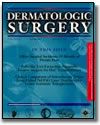rn Office Surgical Incidents: 19 Months of Florida Data
rn
rn 
rn
rn Dermatologic Surgery
rnrnrn
rn
rn
rn 2002 Abstract
rn
rn 0208-710 Coldiron
rn
rn Coldiron B.
rn
rn Office surgical incidents: 19 months of Florida data. Dermatol Surg. 2002 Aug;28(8):710-2; discussion 713. PMID: 12174063 brettcoldiron@hotmail.com
rn
rn BACKGROUND:
rn In 1999-2000 a series of sensational articles were published in the lay media emphasizing the hazards of office surgery. Since then 31 state medical boards or legislatures have, or are in the process of drafting regulations restricting office procedures.
rn
rn OBJECTIVE:
rn To determine the nature, incidence and scope of injuries and deaths resulting from office procedures.
rn
rn METHODS:
rn Mandatory reporting by physicians to a neutral central agency of all office surgical incidents that resulted in death, serious injury, or transfer to a hospital in the State of Florida from February 2000 to September 2001. Telephone and Internet follow up to determine reporting physician board status, hospital privilege status, and office accreditation status.
rn
rn RESULTS:
rn In 19 months there were 43 procedure related-complications and eight deaths. Liposuction under general anesthesia was the single most common cause of incidents and deaths. There were no injuries or deaths reported with liposuction with tumescent anesthesia. 50% of offices reporting incidents or deaths were accredited by an independent accrediting agency. There were no incidents or deaths reported due to the anesthesia when using conscious sedation anesthesia, or intramuscular sedation or analgesia 98% of physicians reporting incidents or deaths had hospital privileges and were board certified. Anesthesiologists or nurse anesthetists provided all general anesthesia, and deep sedation. There were no physicians performing procedures outside their scope of specialty training.
rn
rn CONCLUSION:
rn Liposuction under general anesthesia deserves closer scrutiny. Office accreditation is not associated with fewer patient injuries and deaths. Restrictions on tumescent liposuction, conscious sedation and intramuscular sedation and analgesia would not yield any saved lives or fewer injuries since these modes of anesthesia resulted in no injuries or deaths. Board certification and hospital privilege requirements for office practice would have very little effect since the vast majority of reporting physicians already had these credentials. These data do not show an emergent hazard to patients from office surgery This data strongly contradicts the lay media portrayal of the dangers of office procedures. Mandatory reporting of office incidents should be strongly supported, and this data should be available for analysis after protecting patient confidentiality.
rn
